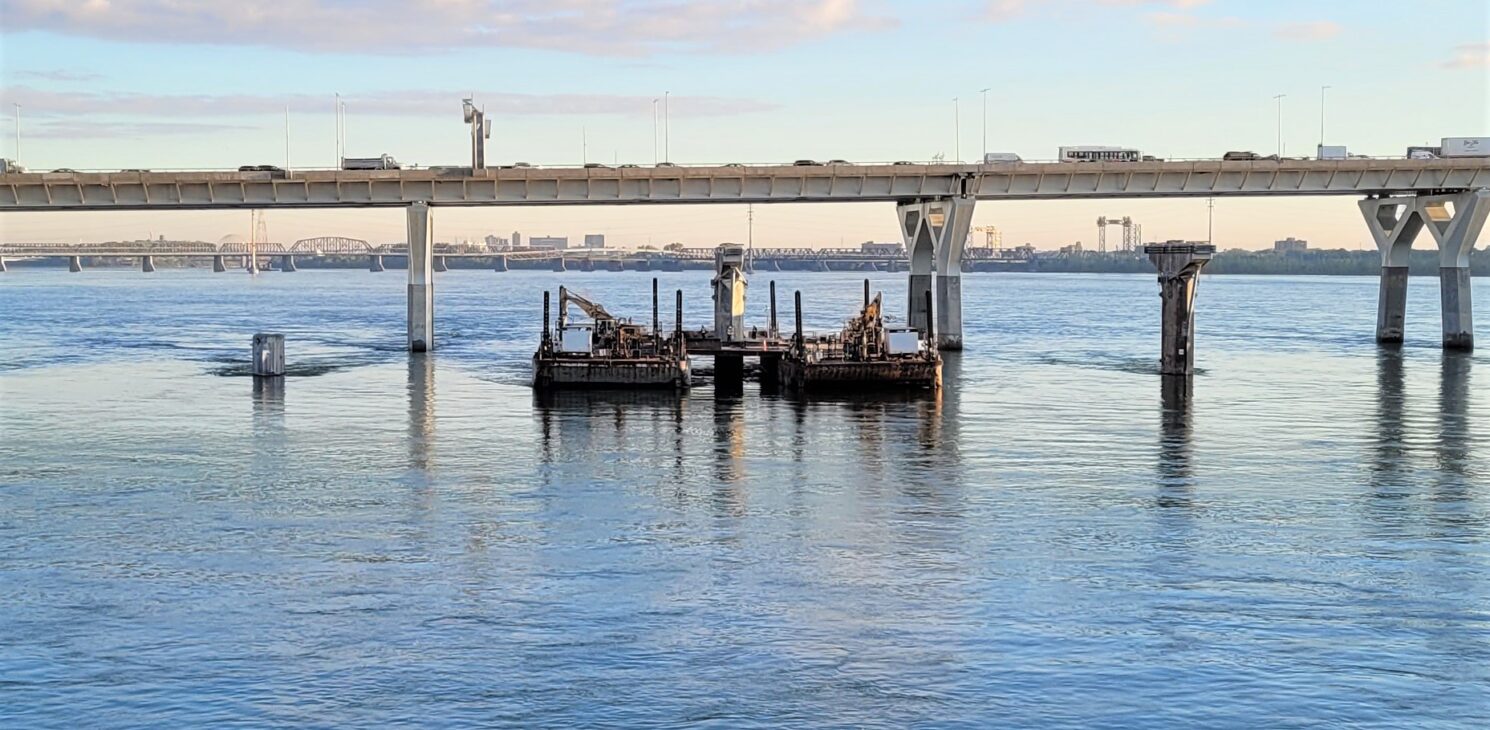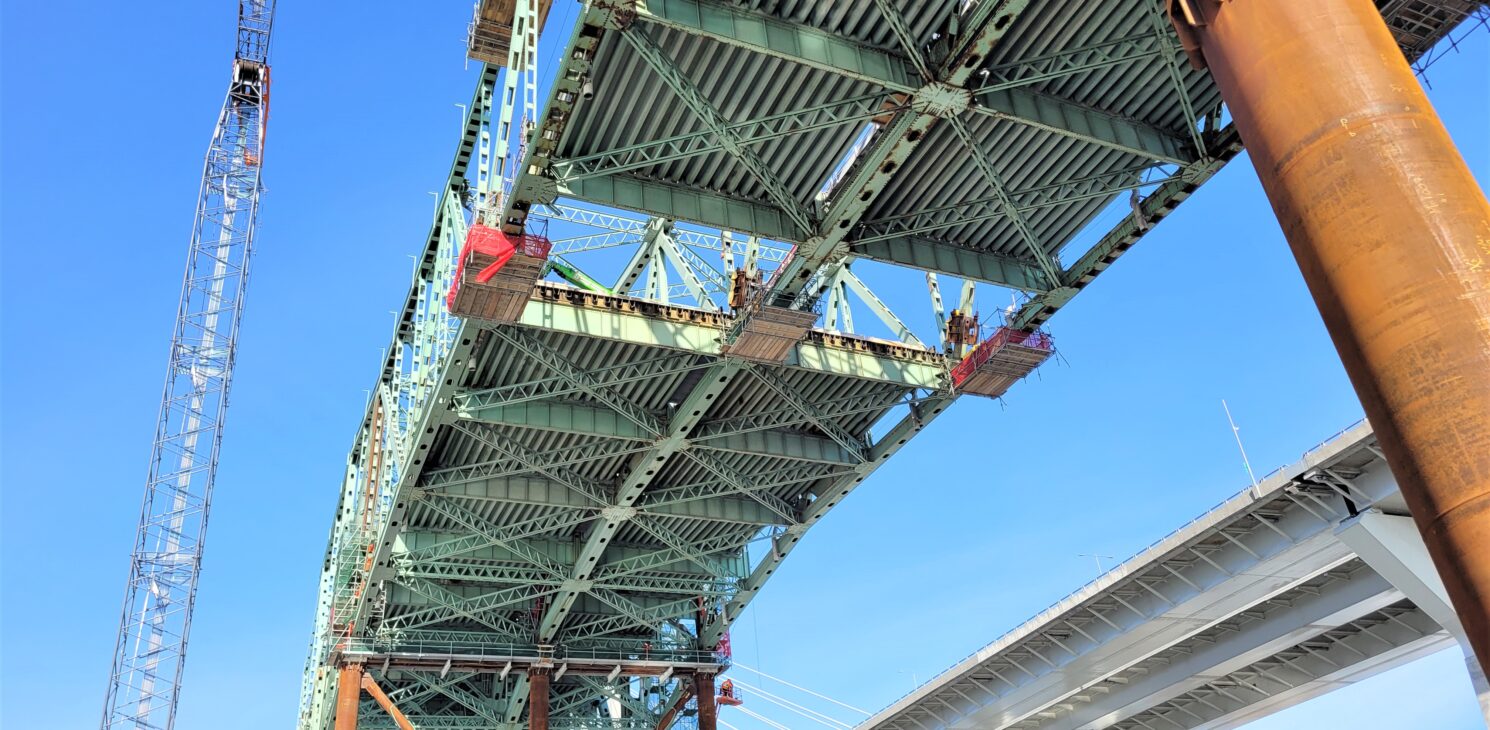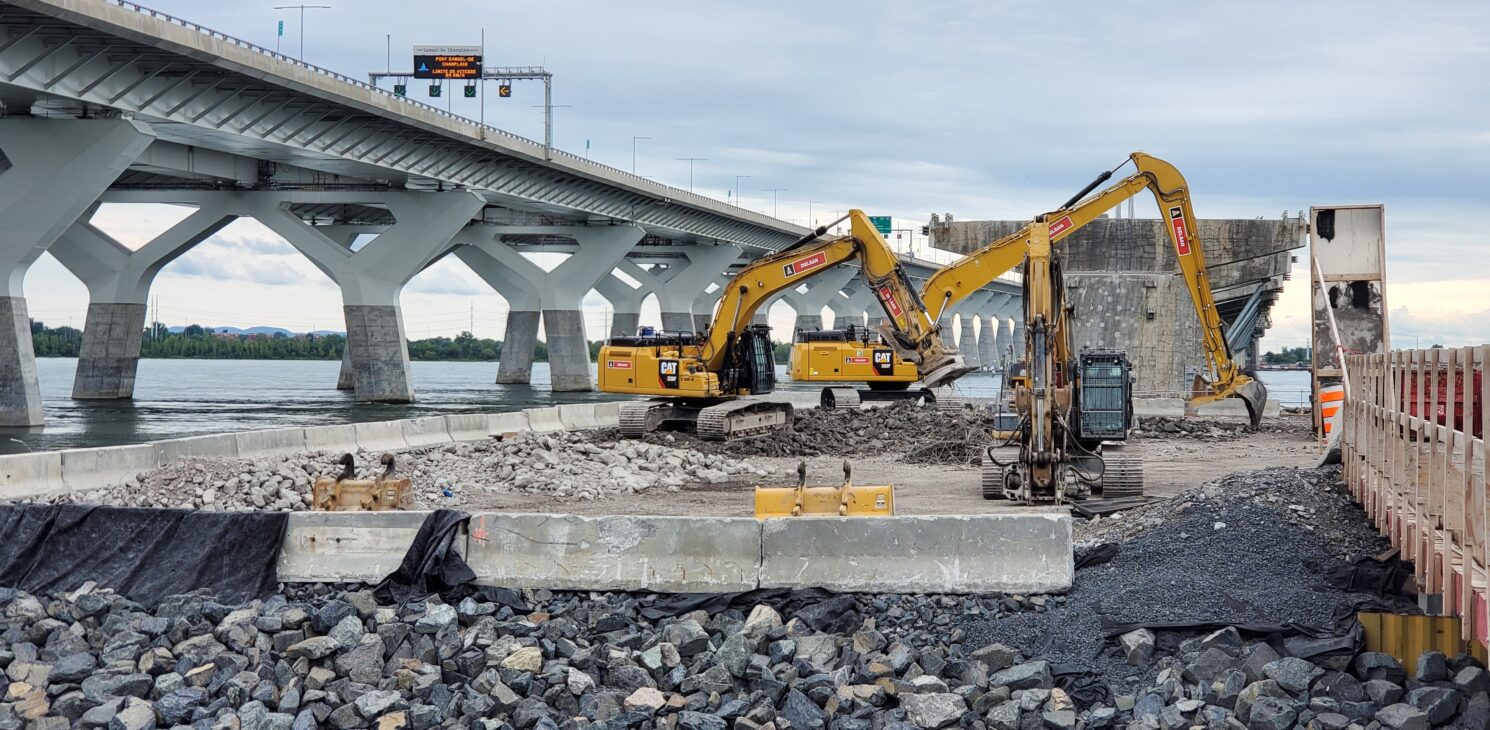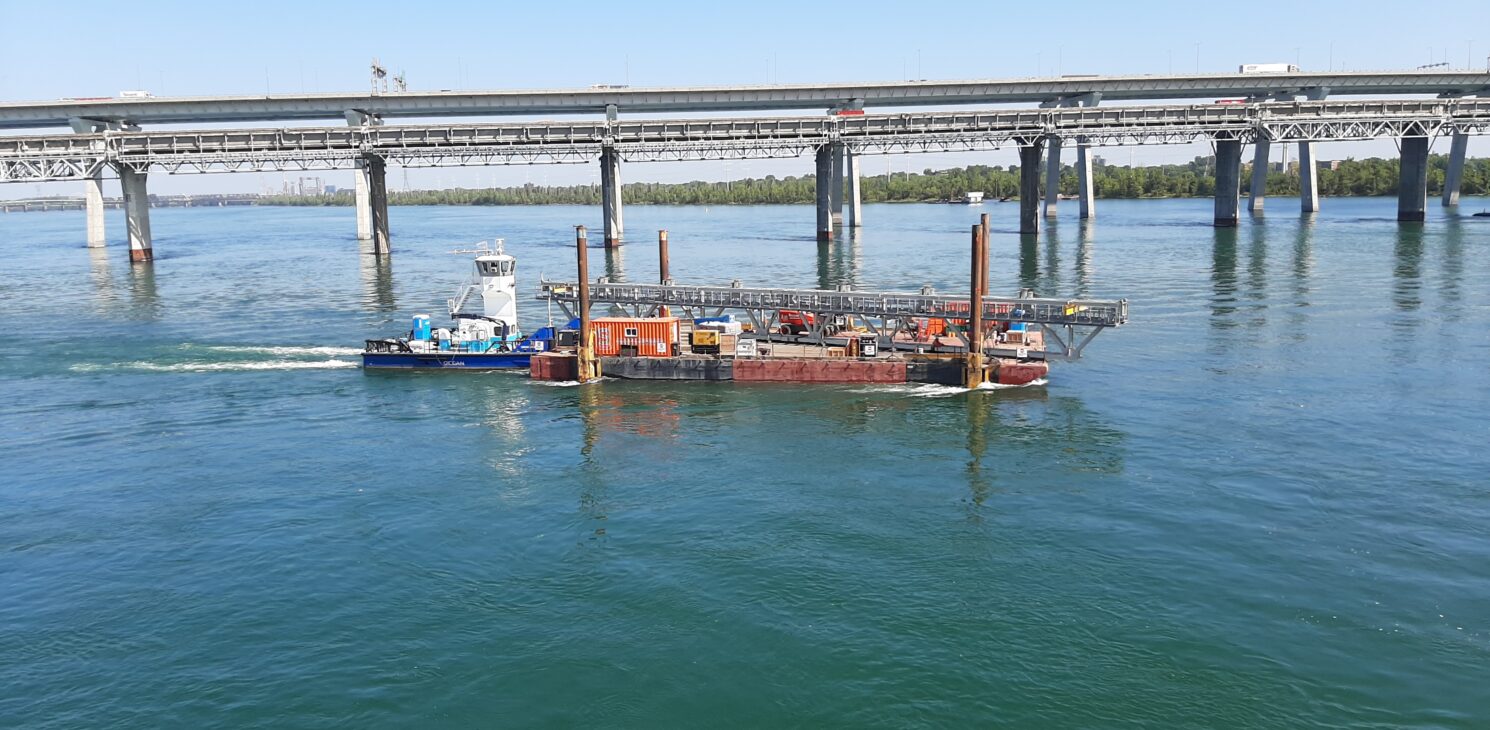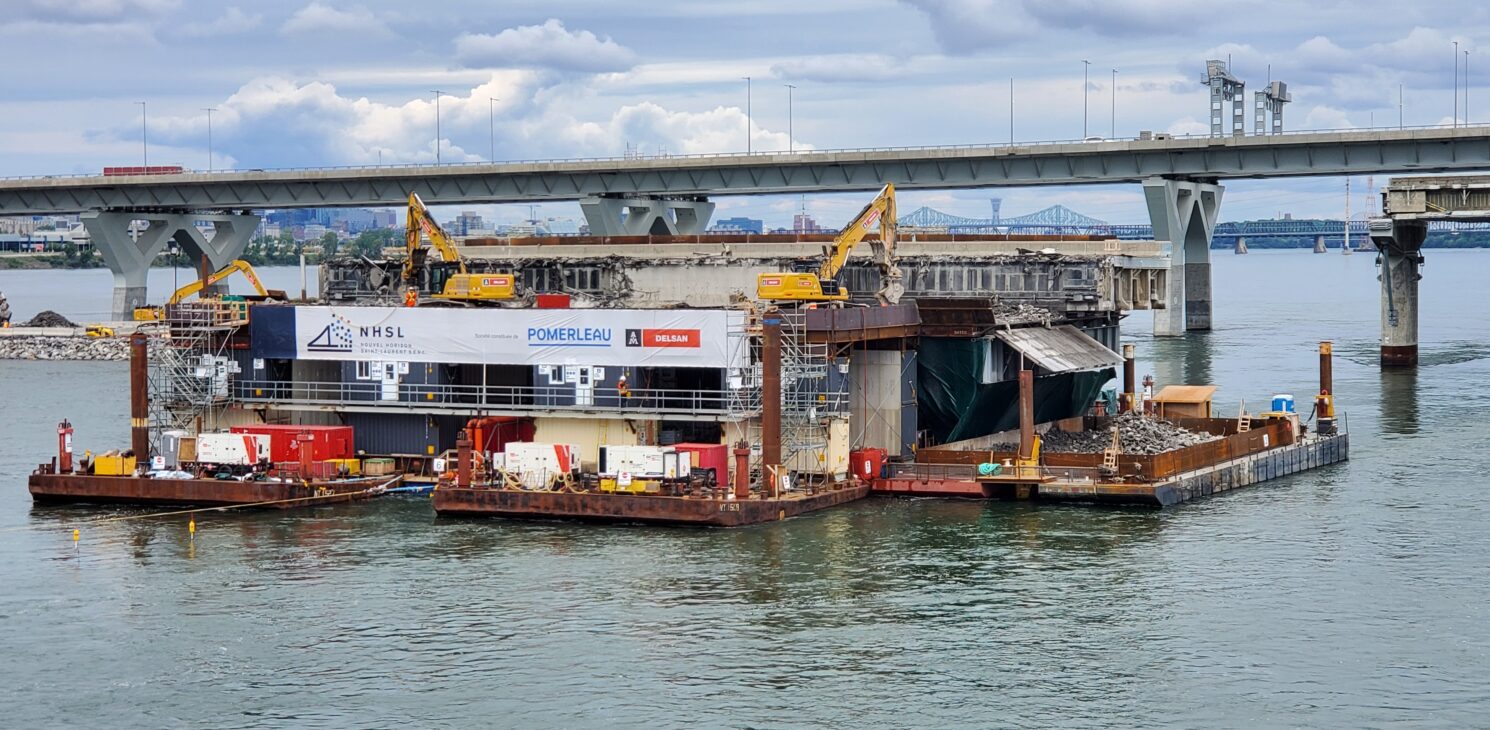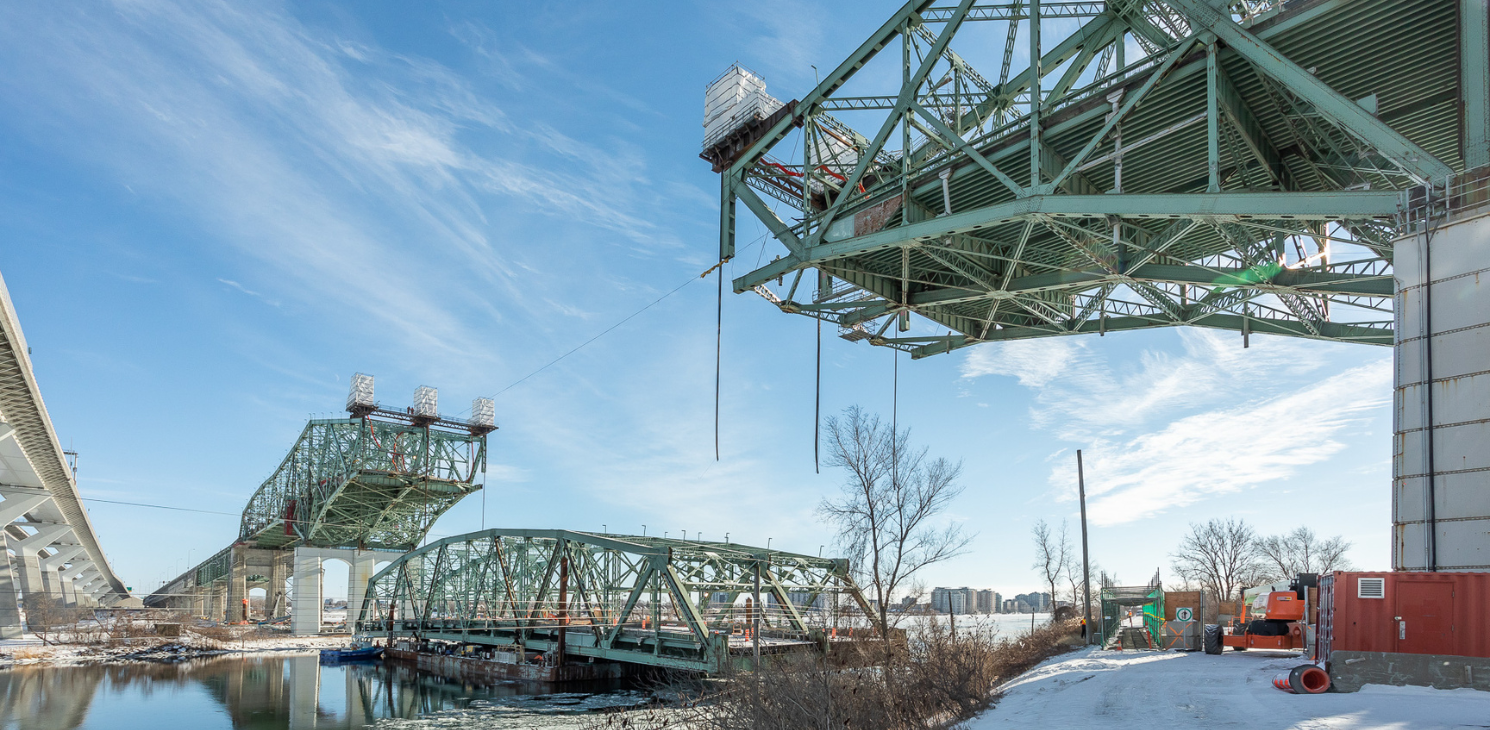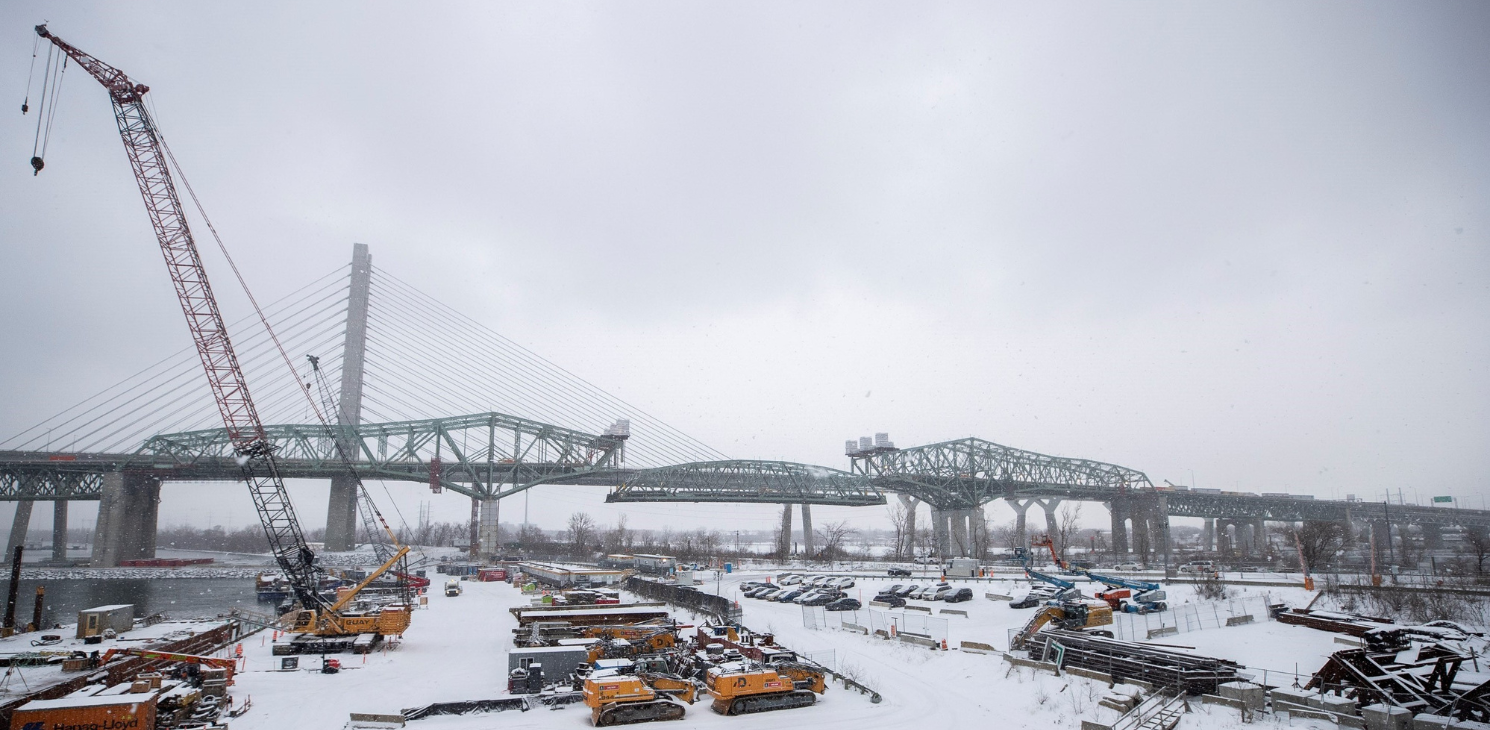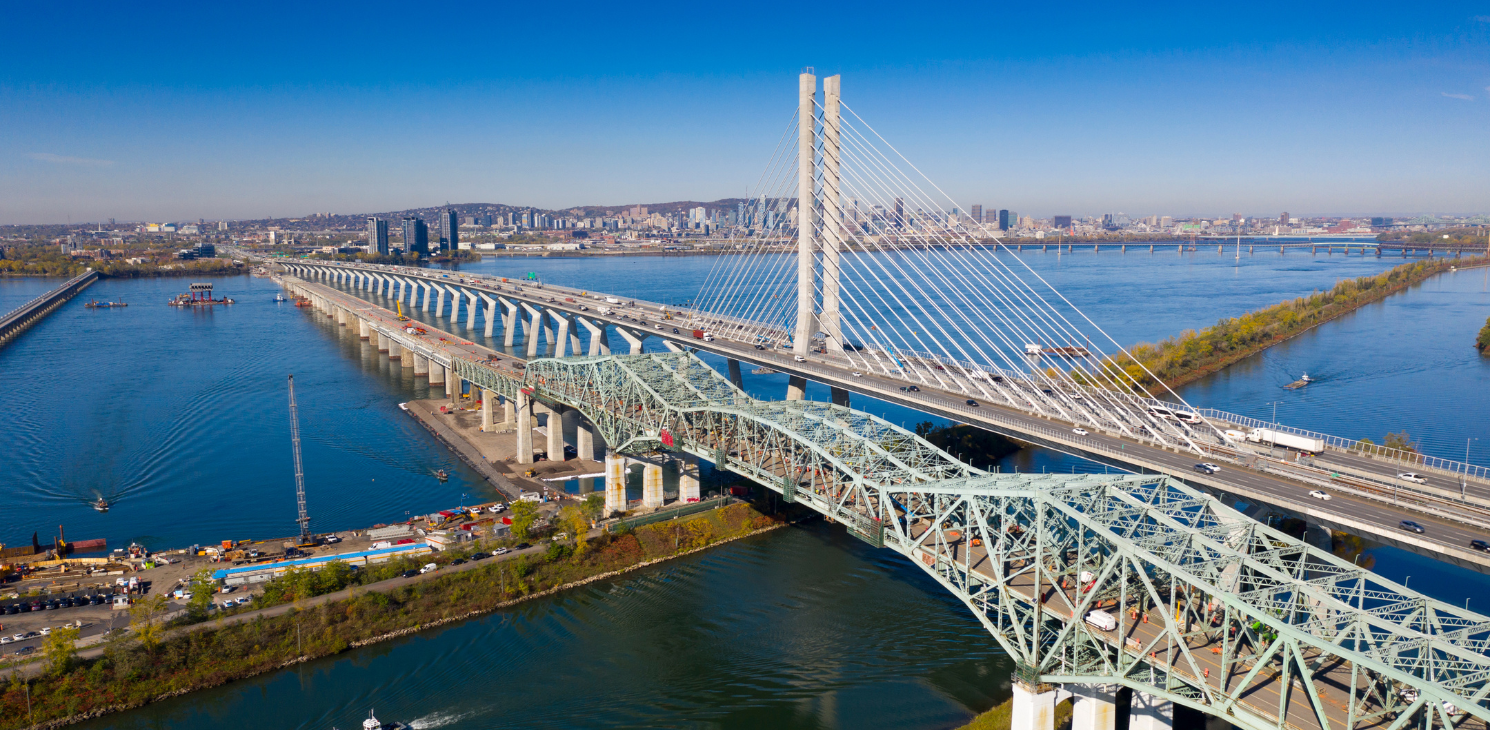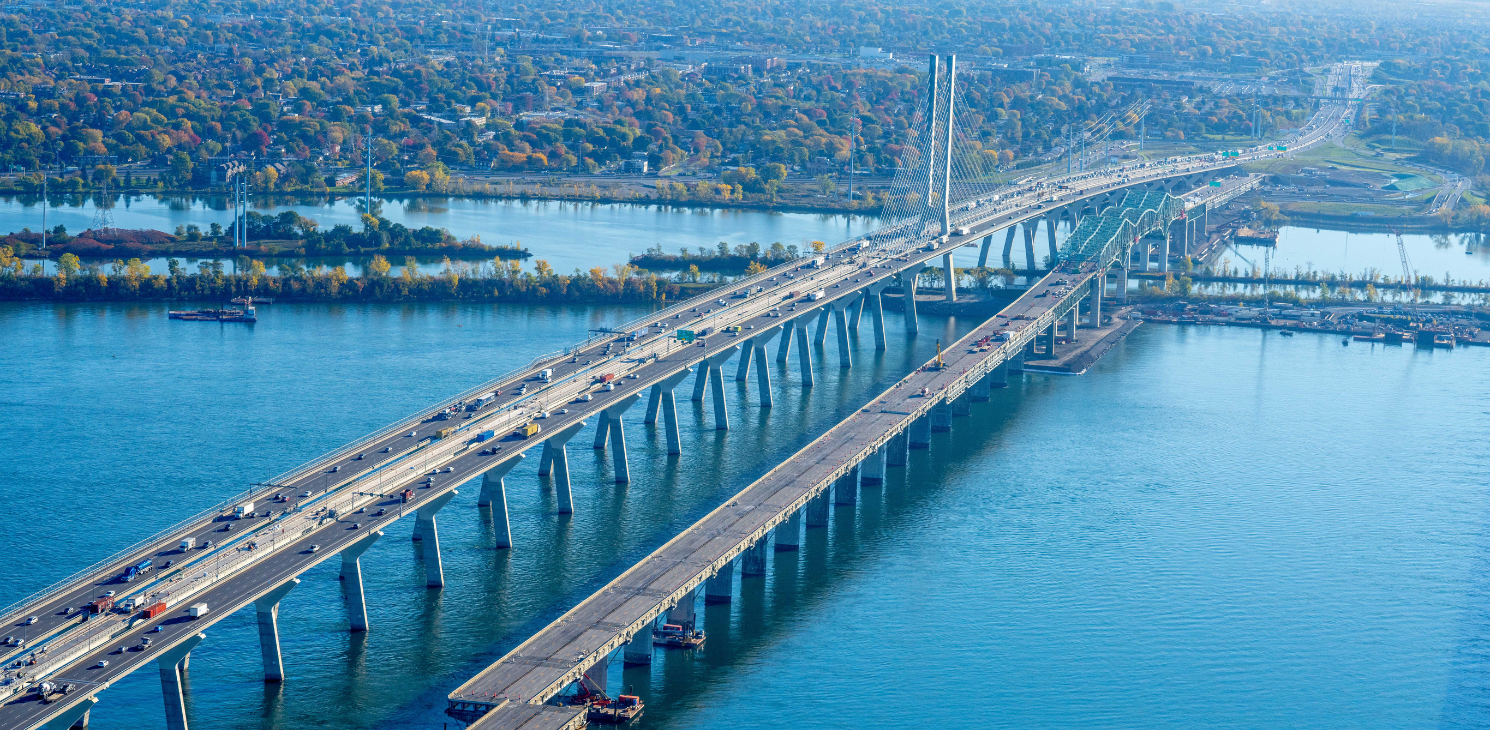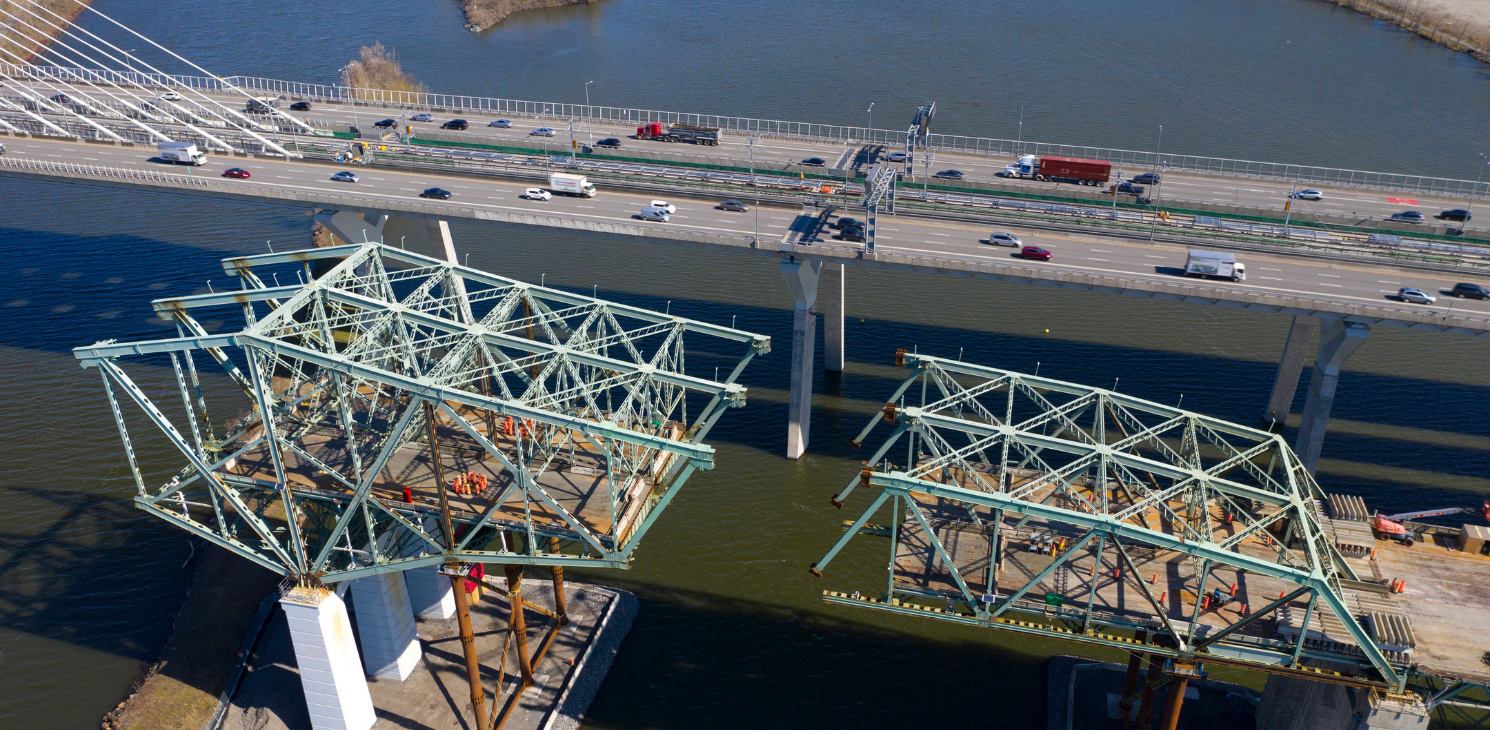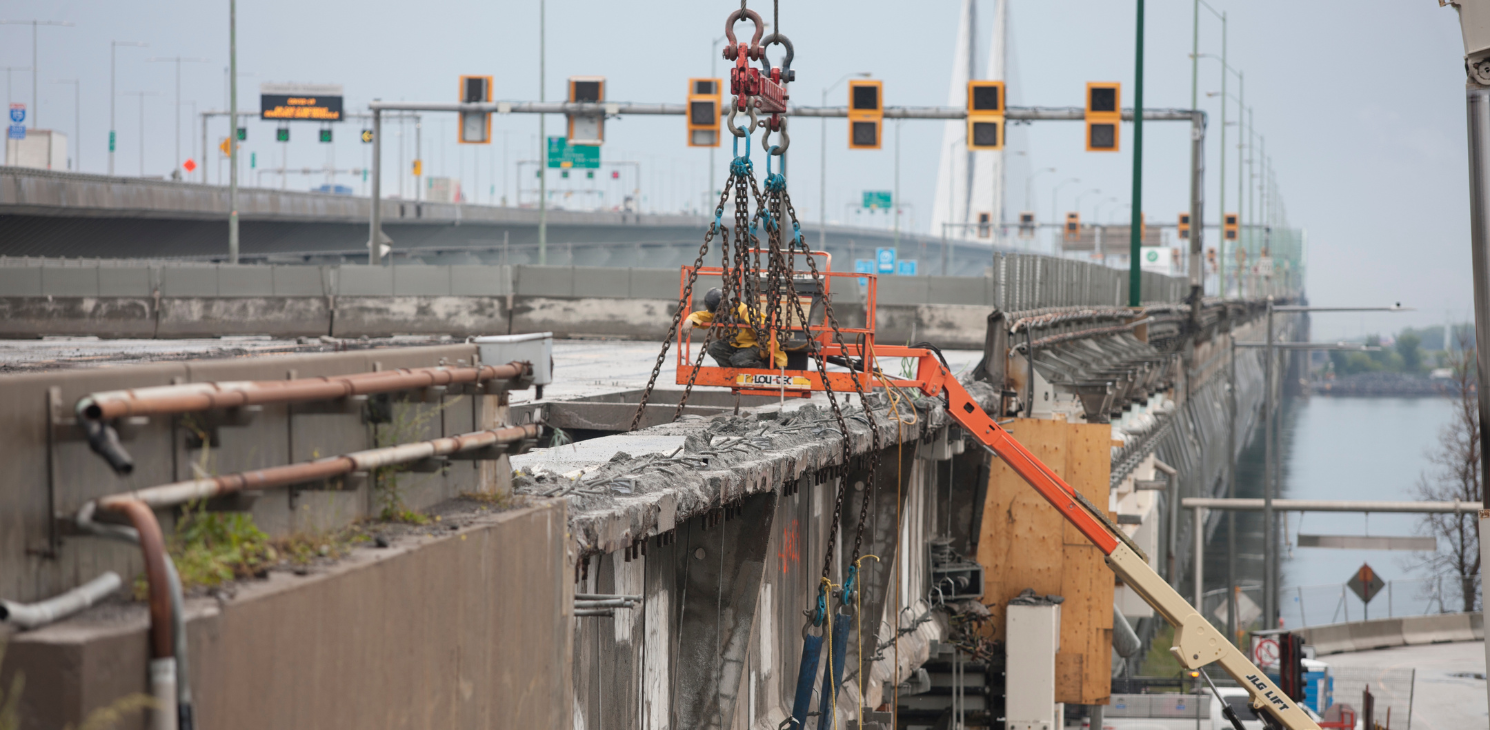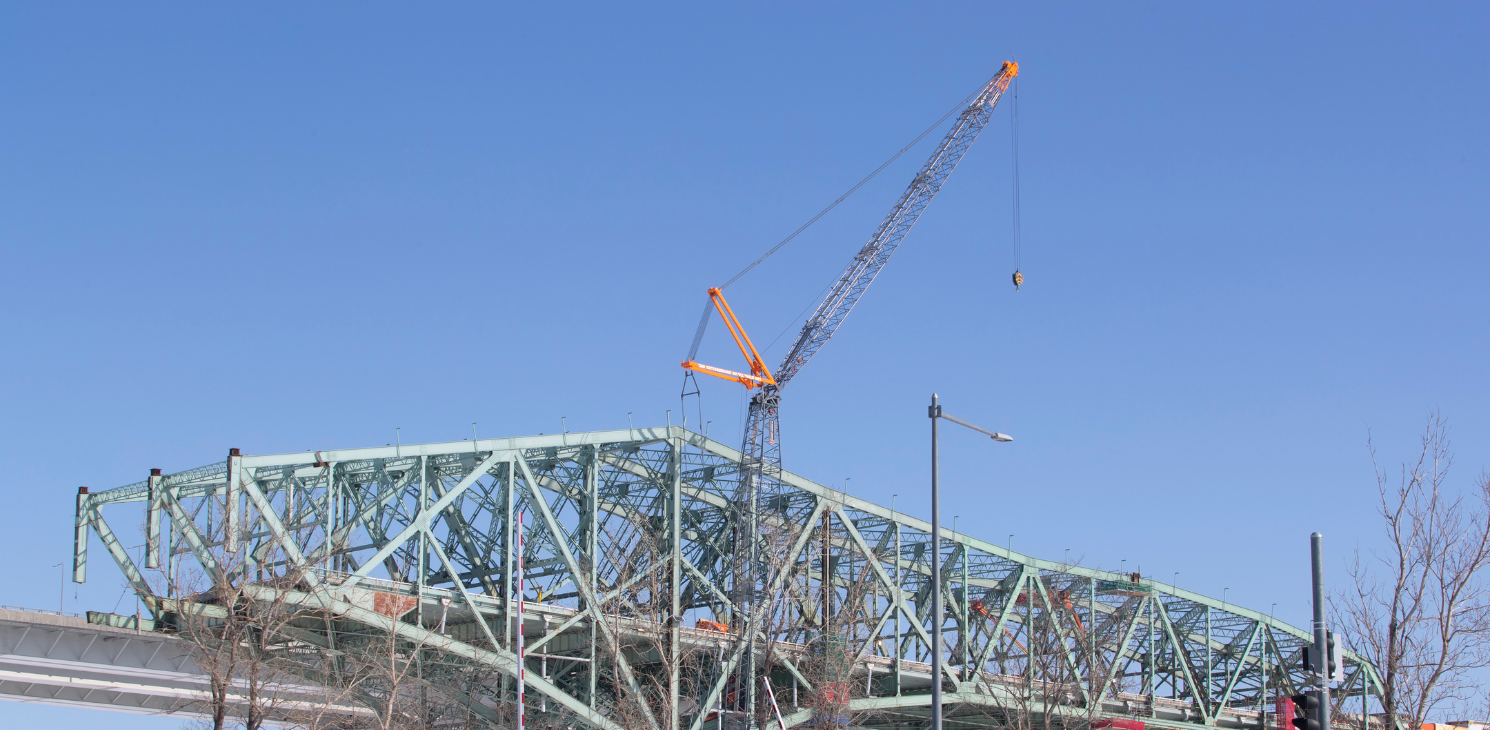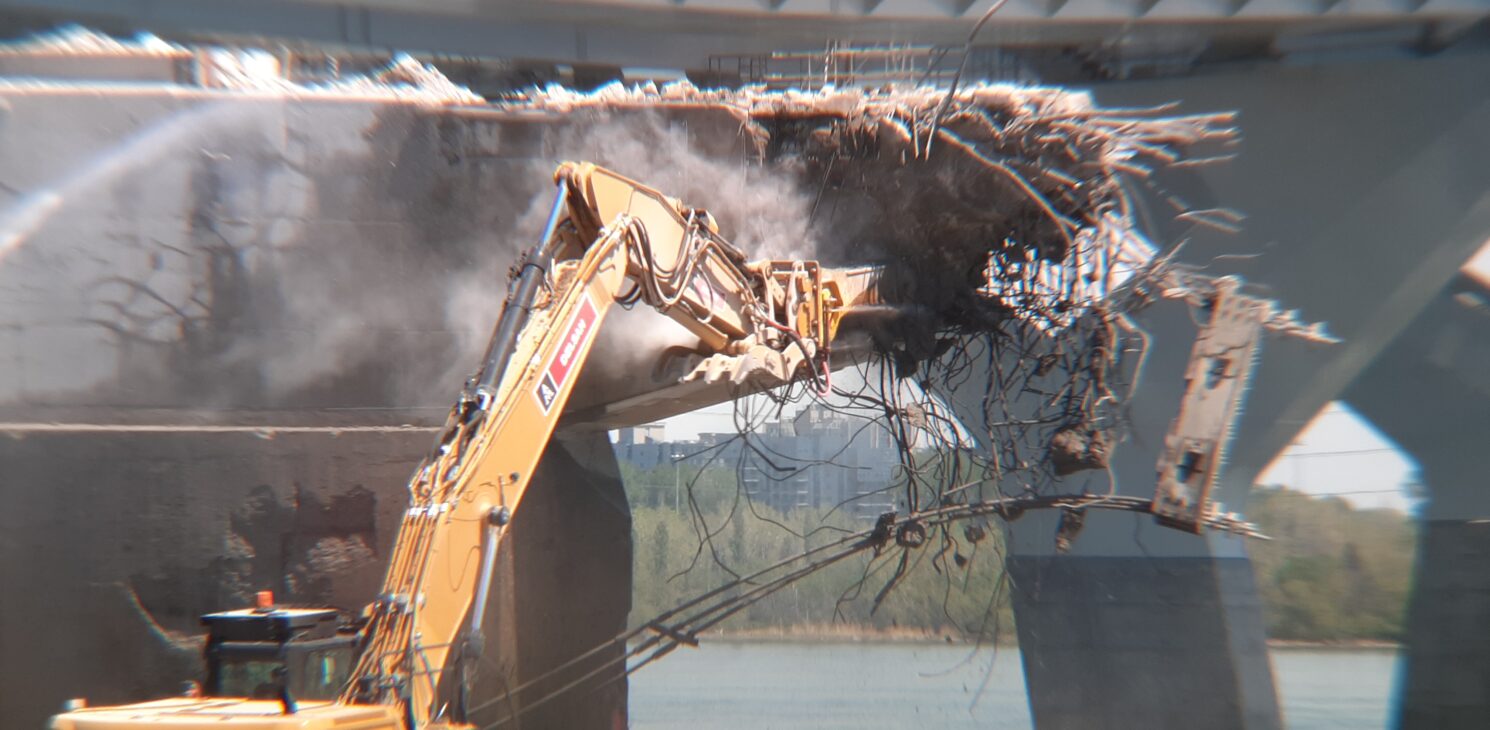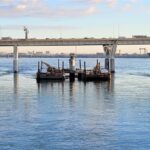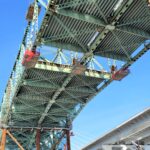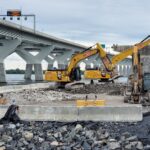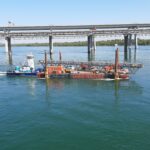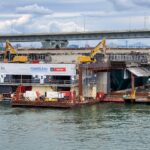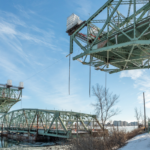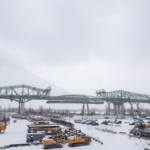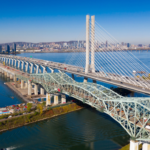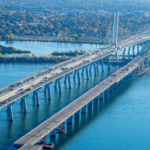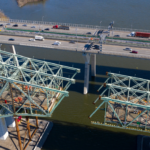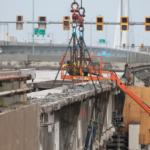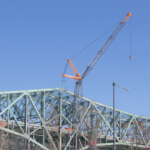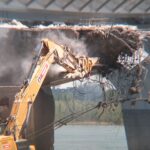The Champlain Bridge has undergone numerous major repairs over the years, and has reached the end of its useful service life. In light of this, the federal government decided to deconstruct the old structure and build a new one. Deconstruction will liberate seven hectares on the shorelines and allow for the creation of land for public use. This component of the project, entitled “Héritage Champlain”, is a program aimed at enhancing the value of the shorelines and the Estacade that crosses the St. Lawrence River. The deconstruction work was carried out within the overall budget of $400M allocated to the project.
Project management
CIMA and FNX-INNOV provided services related to contract management, including quality management, namely for the execution of audits on the contractor’s quality management system throughout the project.
Specific characteristics of the structure
- Vital economic link between Montréal, the Montérégie region and the United States (more than $20 billion worth of goods cross the bridge each year)
- Concrete/steel cantilever structure with a 215 m central span crossing over the Lawrence Seaway
- Slightly more than 3.4 km in length, including the concrete approaches, with decks consisting of pre-stressed beams held together by a post-tensioned transverse system
- The structure comprises 56 piers (48 single and 8 triple)
Risk management
The deconstruction of the Champlain Bridge involved major risks and significant difficulties due to its composition, its deteriorated condition and the substantial reinforcement work that had been carried out over the years. Our role was to ensure that the work methods adopted by the selected design-construction contractor complied with the contract while minimizing the risks. A number of complex work methods were required due to the many types of reinforcements carried out as a result of the varying degrees of deterioration of the structural components. Each method entailed risks that could have compromised one or more components in terms of health, the environment and sustainable development, along with scheduling and construction costs.
Planning for deconstruction work took into account the project’s impact in the following areas:
- The safety of employees, workers and the public
- The environment, wildlife and vegetation
- Navigation in the Seaway Channel, the continuity of operations and integrity of the infrastructures and the use of pleasure craft on the River
- Local and highway traffic conditions and the quality of the living environment for those living along the river
- The integrity of the infrastructure and continuity of operations at the new Samuel-De Champlain Bridge
Material reclamation
We were also entrusted with managing the project during the deconstruction work, with the goal of ensuring that the design-build contract, awarded to the Nouvel Horizon St-Laurent G.P. consortium met all contractual requirements namely related to environmental protection, reclamation of materials, sustainable development, research and development projects, as well as reuse projects.
To this end, we have ensured constant monitoring throughout the project to protect the environment, namely by applying work methods that mitigate environmental impacts, such as the implementation of GHG compensation projects. We have also ensured that material reclamation methods used during the project were based on the 4R’s approach that prioritizes reduction, reuse, recycling, and reclamation of materials prior to disposal. Lastly, several other mitigation measures were implemented to minimize the environmental footprint of deconstruction activities.
